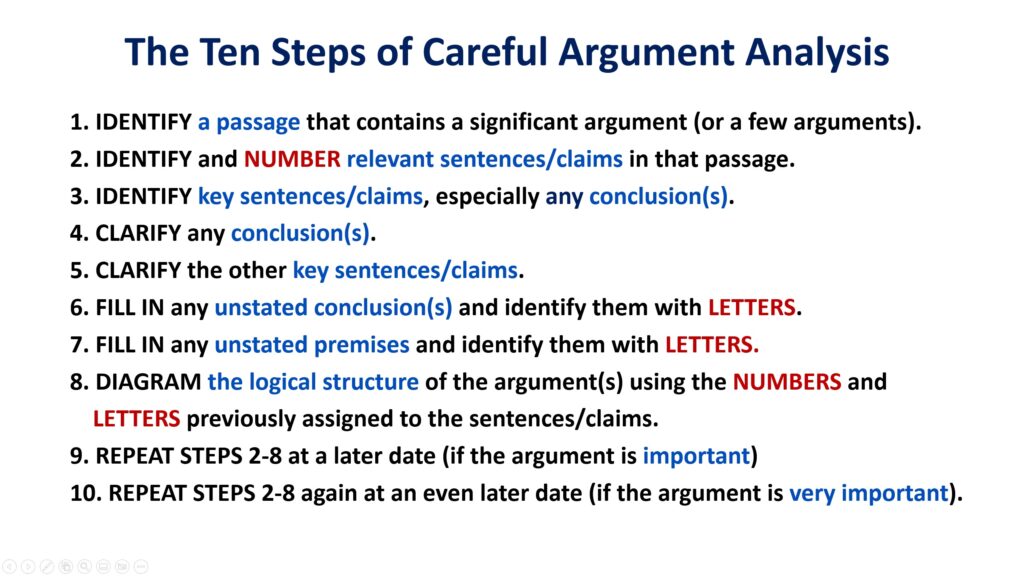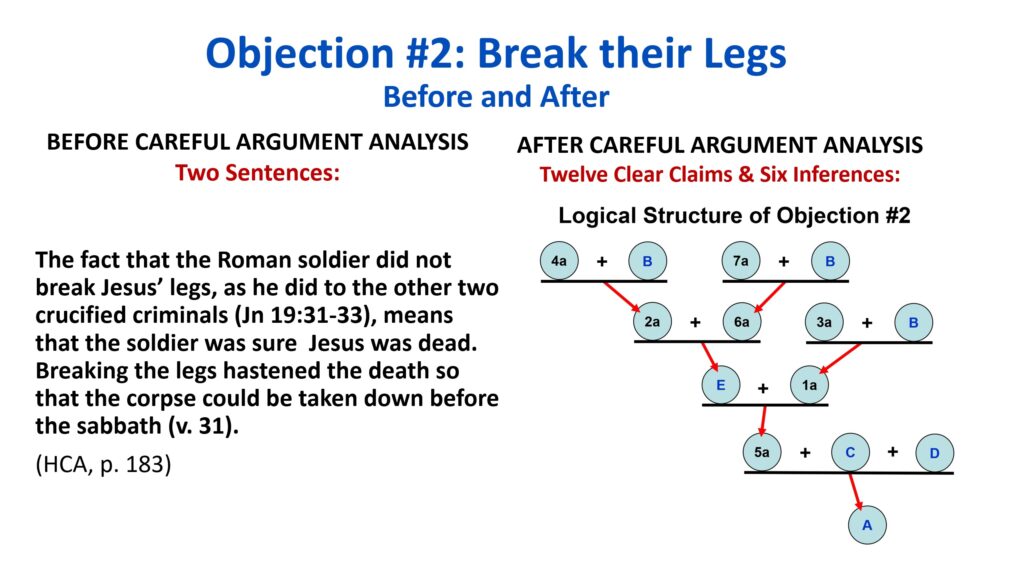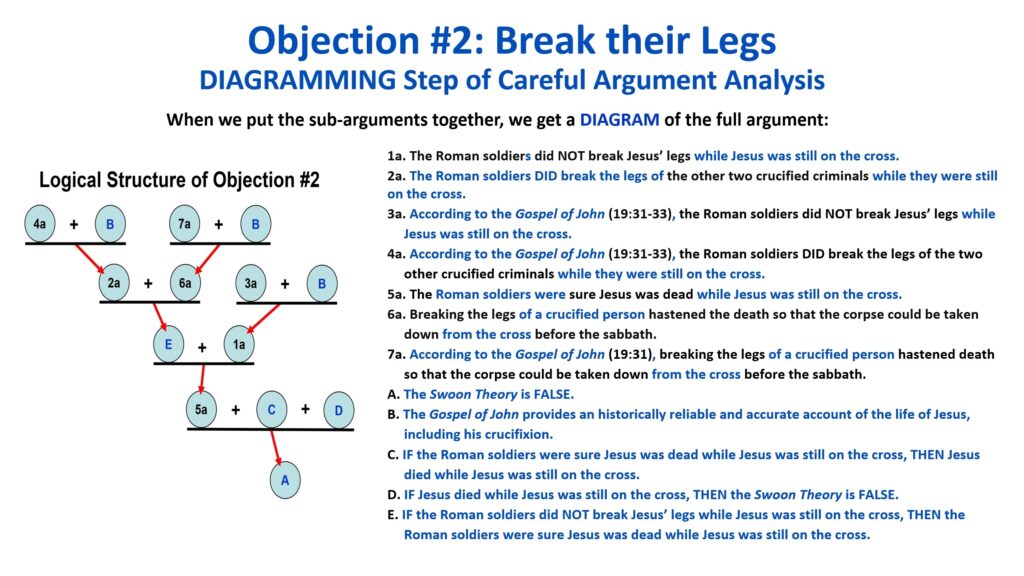How to Do Careful Argument Analysis
Critical Thinking is basically CAREFUL thinking.
More specifically, it is thinking in which a person continually strives to conform his or her thinking to the universal standards of thinking, which include the following:
- Clarity
- Accuracy & Precision
- Relevance & Significance
- Logicalness
- Breadth (understanding alternative points of view)
- Depth (understanding the complexity of the issues)
- Sufficiency (of available evidence to allow for reasonable conclusions)
- Fairness
Careful argument evaluation is the heart and soul of critical thinking. But one cannot do a careful job of evaluating an argument unless one first has a clear understanding of the argument one is trying to evaluate. Thus, careful argument analysis is essential to critical thinking. In order to be a critical thinker, one must develop the knowledge, skills, abilities, and desire to carefully analyze and clarify arguments.
I will be making a presentation for the 43rd Annual International Conference on Critical Thinking. The subject of my presentation is: “How to Do Careful Argument Analysis”. The presentation will include a process for doing careful argument analysis and a few examples of careful argument analysis. The example arguments are taken from Kreeft and Tacelli’s case for the resurrection of Jesus in Chapter 8 of their Handbook of Christian Apologetics. Specifically, I will demonstrate careful argument analysis of three objections that Kreeft and Tacelli raise against the Swoon Theory.
Here is a link to the DRAFT of my Powerpoint presentation on “How to Do Careful Argument Analysis”:
https://thinkingcriticallyabout.podbean.com/e/how-to-do-careful-argument-analysis-draft/
This is a summary of my process of argument analysis that I demonstrate in the presentation:

Here is one example of an argument diagram for an Objection against the Swoon Theory by Kreeft and Tacelli:


